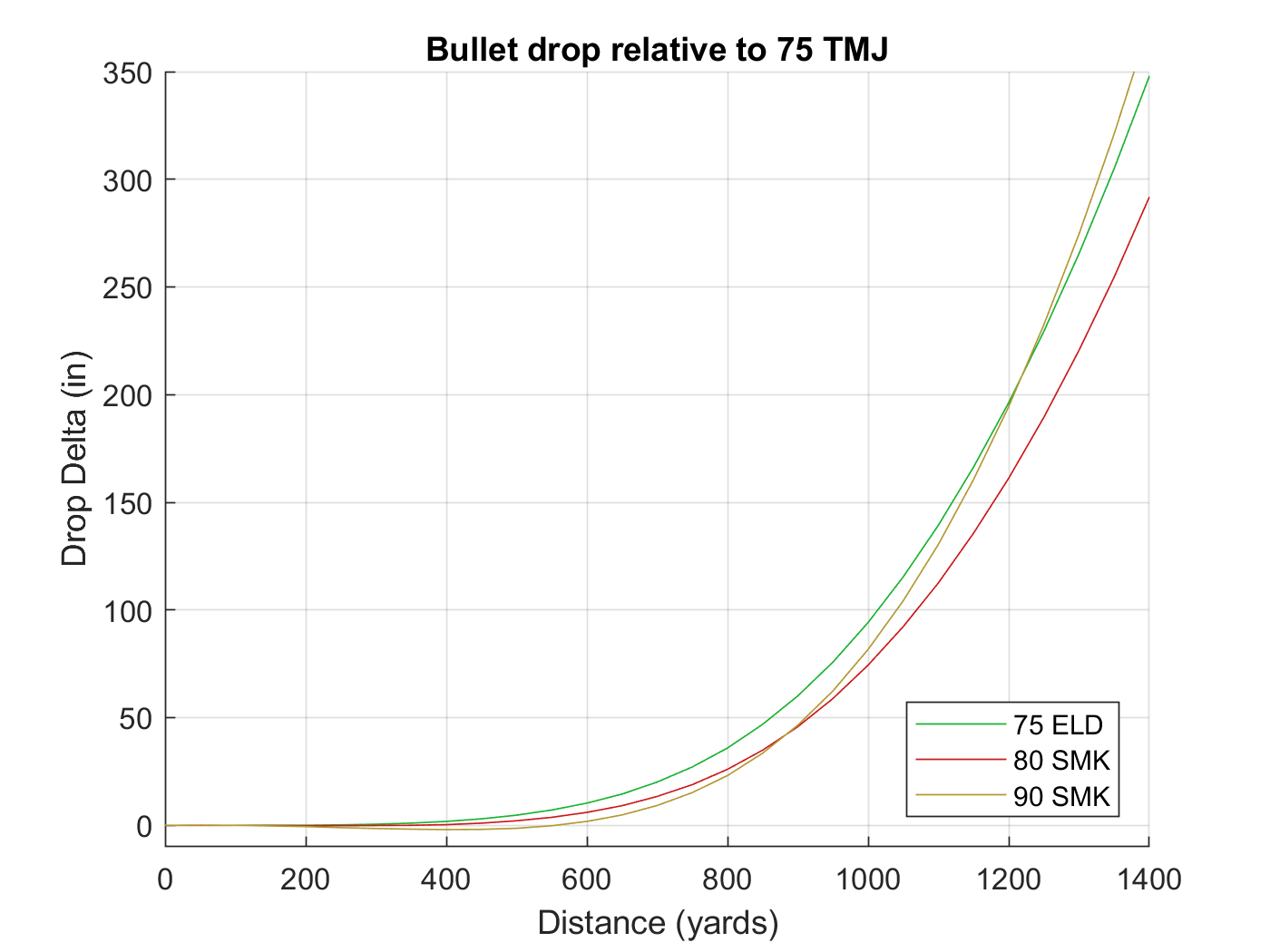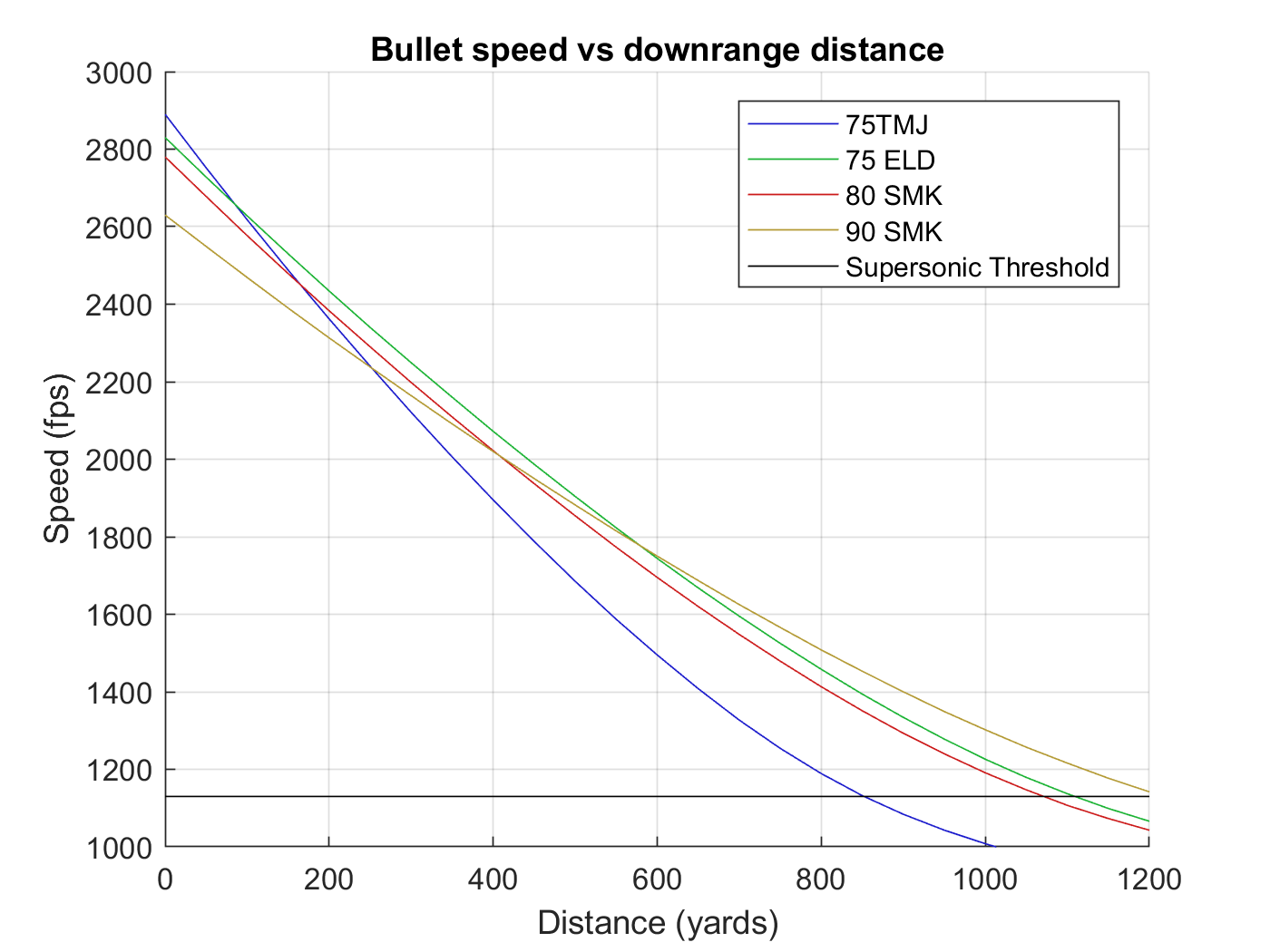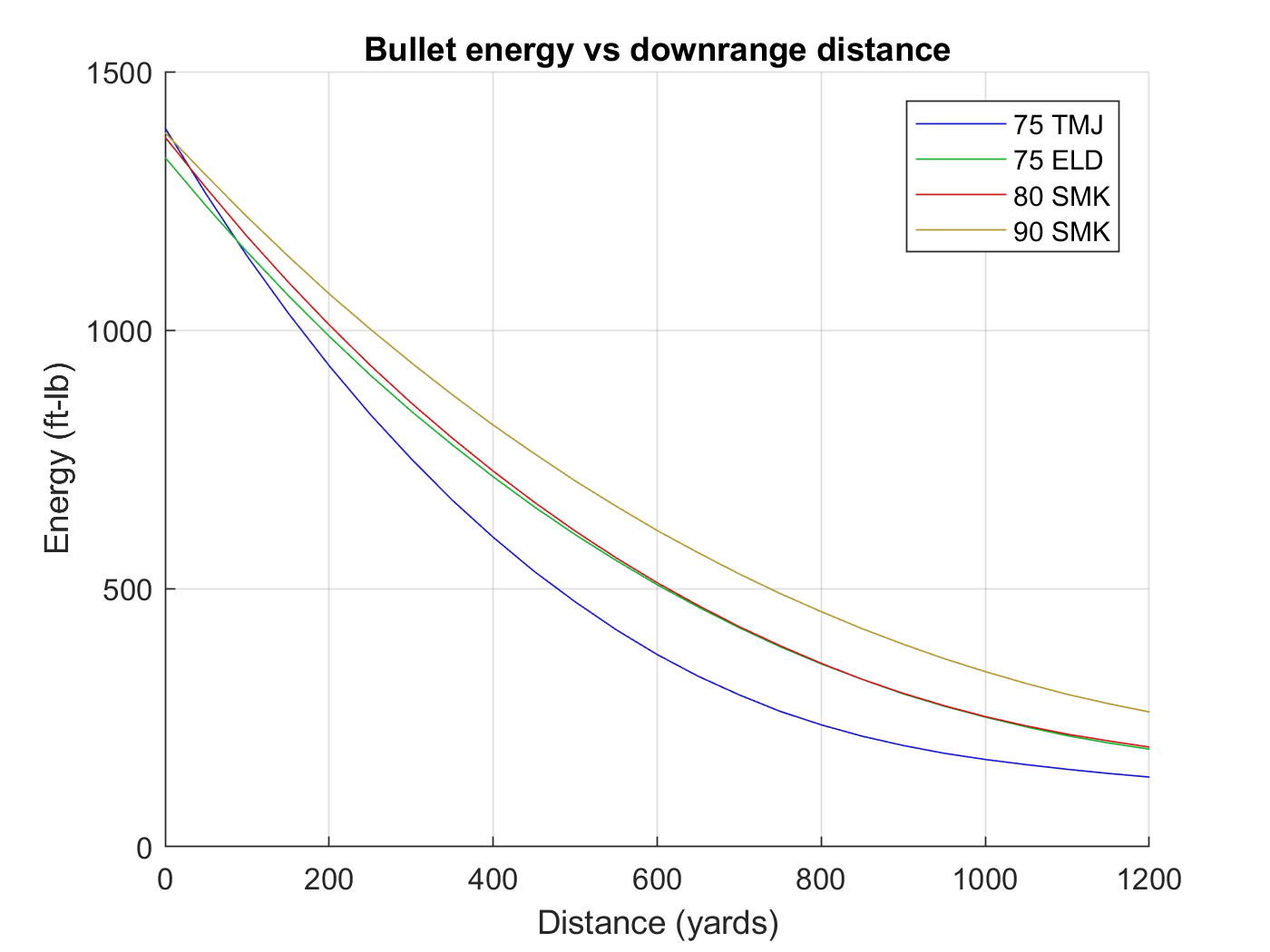Bison Armory will have new .224 Valkyrie rifle ammunition available to the shooting public early in May. We have come up with two loads to start with, using 75 grain Hornady ELD and 80 grain Sierra MatchKing bullets. The reason for this bullet choice is that many or most 1:7 twist barrels are struggling to shoot the 90 grain Sierra MatchKing accurately. Now what is the point of a particular load that will shoot 1300 yards if it won’t hit the target?
Alternatively, I have found the 75 TMJ offering by Federal to be very accurate in Bison Armory 20″ .224 Valkyrie barrels. And muzzle velocity of 2890 fps from that barrel is good too. However, the 75 TMJ has a G1 ballistic coefficient of 0.35 which is nothing to write home about.
We figured there must be something better than these two suboptimal loads for the .224 Valkyrie. To that end, I investigated the heaviest bullets available that would stabilize well with a 1:7 twist barrel, and the 75 grain ELD and 80 grain SMK are at the top of the list. The 75 ELD has a G1 BC of 0.467 and the 80 SMK has a G1 BC of 0.461. These ballistic coefficients are tame compared to the 90 SMK G1 BC of 0.563, but the 20″ barrel can only push that bullet to 2630 fps.
With modest loads I am able to push the 80 grain SMK to 2780 fps and the 75 ELD to 2830 fps. Faster loads may be attainable, but these are where we’re at with safe loads now.
Time to compare performance. The following charts are extremely interesting:

Trajectory comparisons over 1400 yards don’t look very good. So here I’ve subtracted the 75 TMJ drop from those of the other three projectiles. Notice out to 900 yards the 75 ELD and 80 SMK have less drop than the 90 SMK from a 20″ barrel (in this case less drop is the same as more “drop delta” i.e. the difference between the 75 TMJ and the projectile in question). Notice also that the 90 SMK doesn’t surpass the 75 ELD until 1200 yards (this is not entirely true, as the 75 ELD went subsonic a little before 1100 yards, and thus after that point would have dropped more than shown here). So we see that at effective ranges out to almost 1100 yards, the 80 SMK and 75 ELD are keeping up with the 90 SMK just fine.

Here we plot the velocity data for all four projectiles. The 75 TMJ has a significant advantage in muzzle velocity over the other 3 loads, but it gives this advantage away before even 100 yards due to its much lower ballistic coefficient. The 80 SMK and 75 ELD both have good muzzle velocity and superior G1 BCs and they perform much better. The 75 TMJ drops subsonic (by my definition, using 1130 fps, not worrying about transonic effects, comparing all projectiles against the same metrics, etc.) by about 850 yards. Now I rarely shoot at distances greater than 600 yards, and the 75 TMJ shoots very accurately for me and is cost effective. So for general range time, it’s a fantastic round all things considered. However, when trying to push out to 1000 yards, it doesn’t cut the mustard.
The two new commercial loads that we are producing at Bison Armory, on the other hand, give true 1000+ yard performance and will shoot accurately in 1:7 twist barrels that struggle with 90 grain projectiles. If you can shoot the 90 grain accurately, you can see that the 90 SMK surpasses the velocity of the 80 SMK at 400 yards, and the 75 ELD at about 600 yards. The two lighter bullets maintain their flatter trajectory to 1000 yards, but they lose in velocity, which translates to energy as we’ll see next.

And now we’re where the rubber meets the road. Nothing says real world performance for hunting and defense like energy. All 4 loads considered are similar out of the gates, but the 90 SMK is markedly superior beyond 100 yards compared to its three slimmer brethren. The 75 TMJ can’t keep up at all, and past 200 yards it is in a different universe of kinetic energy compared to the other three loads. The 75 ELD and 80 SMK, while well below the energy of the 90 SMK, are well above the .223 Remington, and I consider their performance to be excellent. Flatter shooting but less energy is a trade off I can make. Combine that with sub-moa accuracy that I’ve been getting reliably with the 80 SMK and 75 ELD, and we have a pair of winners for anyone shooting .224 Valkyrie.
The 80 SMK load is available for pre-order at Bison Armory and the 75 ELD will be available for pre-order soon. Both loads will start shipping in early May 2018.
Update:
We tried the 79 grain Cutting Edge bullets and they don’t stabilize in 1:7 with our 20″ barrels either. Going to try them in the 1:6.5 twist. Additionally, finally have some 80 grain ELD to see what they will do. Will report back in a couple weeks when we have data.
Thanks, I notice that the BC is .42 for the SMK 80, but for the Hornady .485. Would you use the same load and 0AL for the Hornady? This does look like a very interesting load.
You mention that the American Eagle has a BC of .35 for the 75gr bullet and reaches out to 850 yards before falling below the speed of sound. Have you tried it at extended ranges, like 600-800 yards? It shoots around 1-1.5 moa in my rifle consistently.
Hey Bruce, it might be possible, you’d have to load out to mag length at 2.290″ or longer and probably use Reloader 17. I was able to push close to 2850 with Varget in a 20″ barrel, so going to RL17 and a 24″ barrel you can probably get there or at least close. Use Federal brass. Sierra says you can push the 77 TMK and 80 SMK to 2900 with RL17 loaded to 2.260″, so I think it can be done.
Excellent analysis! I was searching for this kind of information to combine with my accuracy tests.
Can you get to 3000 FPS with the 75 ELD like the 75 TMJ? I think Federal must use blended powers to get to the 3000 FPS for the TMJ. I assume they have these blended by the powder manufacturers.
With blended powder, like the Hornady Super Performance, what could the 80 ELD get to?
What ammunition are you shooting?
I have your 22 inch barrel and bolt. I can’t get it to stay consistent groups. Any suggestions